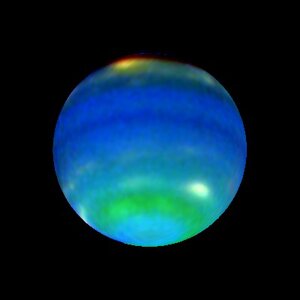30 September
1951: On 30 September 1676, the Danish astronomer Ole Rømer announced that the 9 November eclipse of Io by Jupiter would occur 10 minutes later than that predicted. He was shown to be correct.
Rømer made a detailed study of the frequent eclipses of Io by Jupiter. This enabled him to accurately predict when the next eclipses will occur. However, over a period of months, Roemer's predictions were steadily off by longer and longer intervals of time. His predictions were eventually incorrect by eight minutes. Even stranger was the fact that these predictions then became more accurate until they were correct again. This cycle repeated itself with great regularity.
Rømer realised that this time difference was caused by the difference between the distance between Earth and Jupiter. When Jupiter was closest to Earth, the eclipses happened on time. The further Jupiter was away from Earth, the later the eclipses became - light had a longer distance to travel to Earth.
The size of the Earth's orbit and Jupiter's orbit around the Sun was known at that time and Rømer used these figures to determine the distance between Earth and Jupiter for all his observations. He then used these somewhat inaccurate distances to calculate the speed of light to be around 200 000 km/sec.
Starting with Ole Roemer's 1676 breakthrough, the speed of light has been measured at least 163 times by more than 100 investigators using a wide variety of different techniques. Finally in 1983, more than 300 years after the first serious measurement attempt, the speed of light was defined as being 299 792,458 kilometres per second by the Seventeenth General Congress on Weights and Measures. The metre is defined as the distance light travels through a vacuum during a time interval of 1/299 792 458 seconds. In general, however, (even in many scientific calculations) the speed of light is rounded to 300 000 kilometres per second.















 Germany
Germany
 Austria
Austria
 Belgium
Belgium
 Denmark
Denmark
 Spain
Spain
 Estonia
Estonia
 Finland
Finland
 France
France
 Greece
Greece
 Hungary
Hungary
 Ireland
Ireland
 Italy
Italy
 Luxembourg
Luxembourg
 Norway
Norway
 The Netherlands
The Netherlands
 Poland
Poland
 Portugal
Portugal
 Czechia
Czechia
 Romania
Romania
 United Kingdom
United Kingdom
 Slovenia
Slovenia
 Sweden
Sweden
 Switzerland
Switzerland
































